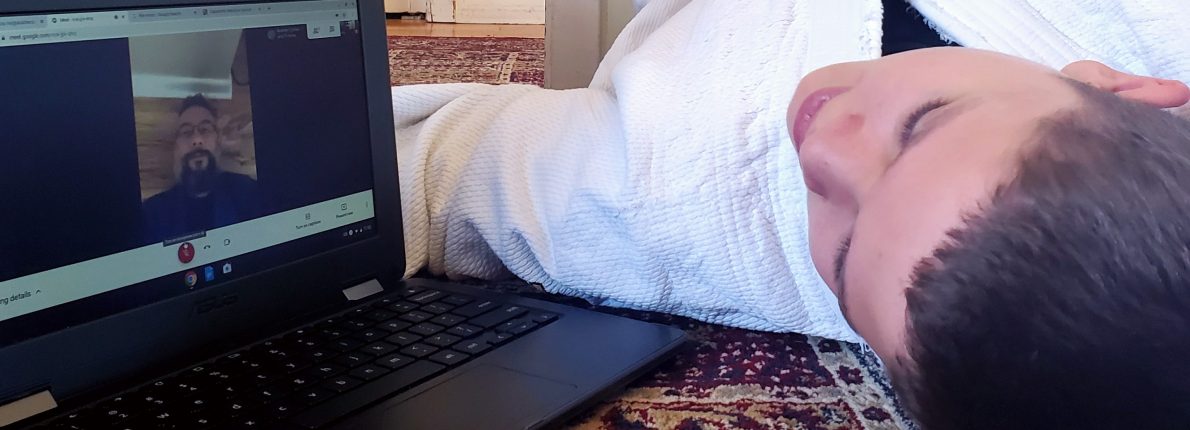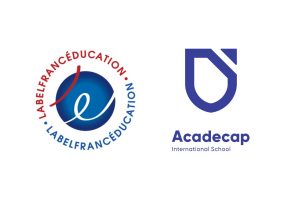Real-time, Virtual Learning
Telelearning across the different grades and age groups
Académie de la Capitale (Acadecap International School) began planning to transition all its classes online, shortly before Premier Doug Ford announced the closure of Ontario schools. On March 30, 2020, our telelearning platform was rolled out to all students from Kindergarten to Grade 12.
Being a Google School, Académie de la Capitale utilizes Google Education Suite applications such as Gmail, Google Classroom, and Google Meet, where students can access their daily academic work, share their learning, ask questions, and participate in real-time, collaborative discussion. We also make use of other platforms such as Padlet. Padlet is used to communicate learning activities with students and parents. Students can find resources for their learning experiences and share their reflections on this online, secure platform. AcadeCap students from Kinder to Grade 6 use Padlet.
Because of our small class sizes, teachers are able to individualize instruction, even virtually. Communication among students and their families, teachers, and administrators is constant, and all parties work collaboratively to ensure learning happens. Additionally, lunch-time clubs, Jiu-jitsu, and extracurricular activities continue to be delivered over Google Meet.
Telelearning in the Early Primary Years Programme (Junior/Senior Kindergarten)
Each week, Junior and Senior Kindergarten students are offered a Choice Board of activities varying from reading and writing to inquiry. The activities on the Choice Board are linked to specific skills and attributes from the IB Approaches to Learning and Learner Profile. These are activities that can be completed independently, or with guidance from their parents or homeroom teacher. Additionally, on the Choice Board, are a set of weekly mathematics activities. This is supplemented by a private link to their classroom Padlet. Kindergarten students can expect to have classes and one-to-one reading sessions delivered using Google Education Suite applications with their homeroom teacher.
Specialist subject activities such as music, visual art, and iSTEAM are available on Padlet in a separate section from the Choice Board and are completed asynchronously.
Telelearning in the Primary Years Programme (Grade 1-2)
In Grade 1/2, students receive a mix of asynchronous and synchronous learning experiences. Asynchronous means that students work on activities independently, not necessarily at the same time as other students, and synchronously means that students work on the same activity at the same time.
Each week, the students receive a Choice Board of activities to complete asynchronously with guidance from their parents or independently. The activities on the Choice Board are linked to the Unit of Inquiry, and each activity develops different IB Approaches to Learning or Learner Profile Attributes. Specialist teachers such as 3rd languages, visual art, and English provide activities to complete asynchronously. While students work independently at home, their homeroom teacher is available online for support. Students have the opportunity to contact their teacher to receive direct support while completing a learning activity. Synchronous learning happens when students participate in live instruction over Google Education Suite applications with their homeroom teacher for the following: inquiry activities, math lessons, English lessons, Physical Education, and Music.
Telelearning in the Primary Years Programme (Grade 3-6)
Students in grade 3 to 6 participate in telelearning with full-day class schedules, which are much like their schedules in school. These include recess and lunch-time clubs. Students receive live instruction using Google Education Suite applications. Assignments are posted and submitted using Google Classroom, and real-time classes are delivered through Google Meet with their teacher. Students get to participate and collaborate, much like they would at school, with their classmates in a virtual setting. Learning experiences, examples of learning and resources are posted to the private classroom Padlet. Students continue to receive instruction from their homeroom teacher, and specialists such as: third language, Physical Education, Art, Music, and English.
Telelearning in the Pre-Secondary School Programme (PSSP) and Ontario Secondary School Diploma (OSSD)
Students in Pre-Secondary School Programme (Middle Years) and OSSD receive full-day instruction using Google Education Suite applications. Students follow their daily schedule, and attend live, virtual classes with their instructor and peers present, like they would on a regular day of school. Specialist and Core subjects continue to be taught virtually. Homework, assignments and assessments are posted, completed and graded using Google Classroom. Teachers use Gmail and Google Classroom to communicate with their students daily. Assessments are conducted virtually, and students are monitored by their teacher through video conferencing. Students work synchronously during class time, and asynchronously outside of class to complete homework and assignments.

